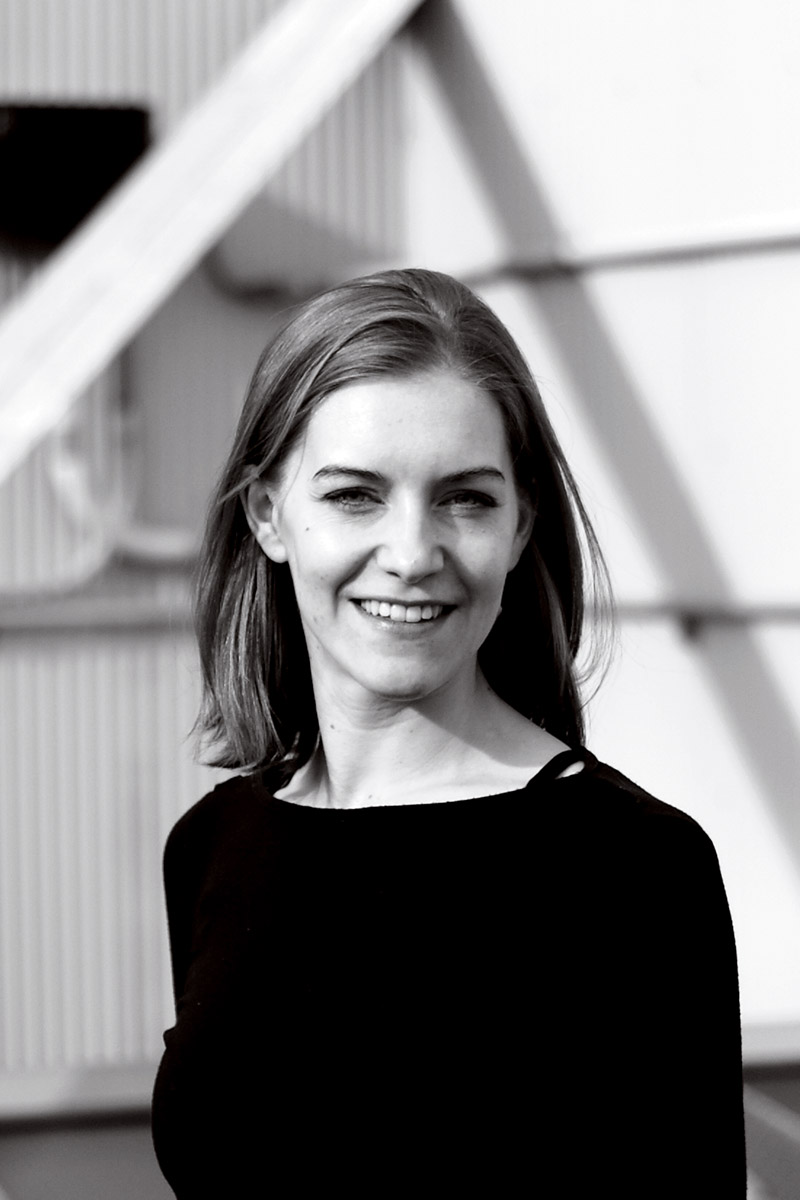On a chilly Friday in mid-March, members of the Trisha Brown Dance Company are rehearsing in a church on Clinton Avenue in Brooklyn. Among the flashing arms and thumping feet, one slim, sandy-haired performer stands out: Jamie Scott ’05, whose Barnard experience has played a crucial role in her dance career—but who landed in the College’s superb dance program, she says, through pure luck.
As a high school student, “I had under-researched Barnard,” she admits with a laugh. She didn’t recognize the scope of the College’s dance program until she arrived on campus. Scott had studied ballet throughout her childhood, but by the time she was applying to college, she had given up on becoming a professional dancer. She conceived of Barnard chiefly as a place to pursue her academic interests, which included East Asian studies.
Yet Barnard drew her back to dance, and showed her that academics and the arts can reinforce each other in meaningful ways. In college, Scott took modern dance classes with instructors such as Risa Steinberg, now associate director of the dance division at Juilliard, who “made dance into a thinking action,” she says. “You had to be a thinking body to do it. And that’s why I went to college—because I wanted to be using my brain.”
A decisive moment came during Scott’s sophomore year, when the modern choreographer Elisa Monte restaged one of her seminal works, “Pigs and Fishes,” for the Barnard dance department. For the first time, Scott felt connected to a mode of dancing other than ballet. “It opened up a whole new chapter for me,” she says.
The experience captured elements of modern dance that continue to thrill Scott. She had long enjoyed the rigor, precision, and scope of movement that ballet demands, and during college, she was surprised to learn that modern dance shares those requirements. She also appreciates modern dance’s emphasis on movement rather than image.
“In ballet, there is an ideal standard of what things should look like, and you’re always trying to attain that image—or that was my understanding at the time,” Scott says. Modern dance was not about appearance, but about “how you do the thing, the physical process, rather than the performative result.”

During her senior year, Scott finally decided to pursue dance professionally after attending a powerful performance by the Merce Cunningham Dance Company. “I was so moved by seeing each of these dancers attack this beast of a work in their own ways.” Post-graduation, she did the “New York dance thing:” waited tables while taking classes and workshops at Cunningham’s company. She was hired as an understudy in 2007 and as a dancer in 2009.
Dancing for Cunningham, one of the major modern choreographers of the last century, presented a wonderful challenge. “It was like a game,” she says. “He would run us into the ground, but in the most joyful way. What was so amazing was to see how every dancer would approach these impossible tasks of movement differently. There was almost more room within his specifications to have an individual voice.”
Scott has performed in major theatres across more than 20 countries, from Paris’ Théâtre de la Ville to Moscow’s Mossovet. She also teaches workshops and master classes. In 2014, she received the Princess Grace Award, which recognizes artists in theatre, dance, and film. Reviewers have praised her “nuance and ease.” The New York Times described a recent performance at the Brooklyn Academy of Music as “riveting,” and a writer for Dance Enthusiast characterizes her as “incisive, centered, wide-eyed, and wiry.”
Cunningham died in 2009, and the company closed at the end of 2011. Two days later, the Trisha Brown Dance Company held auditions. When Scott had tried out for the company before, she considered the work beyond her. “It seemed like a very self-guided journey, and I didn’t feel like I had that in me yet,” she explains. But her work at Cunningham’s company had taught her a lot about herself as a dancer and a person, and she thought that knowledge might make the difference. She was right: she got in.
Scott describes Brown’s work as “internally driven. I have to start from a very quiet, deep internal place and allow it to emanate in a more organic way, sort of like slowly turning up the volume as the body starts to recognize the pattern of movement.”
Scott still loves dancing, but she is interested in trying new things, too. She may return to school to study occupational therapy, a career that would let her apply her interest in movement to helping people relearn basic tasks. Brown’s dances involve plenty of gestural motions, she points out, which have helped her realize that “the most simple gesture can be a dance.”
